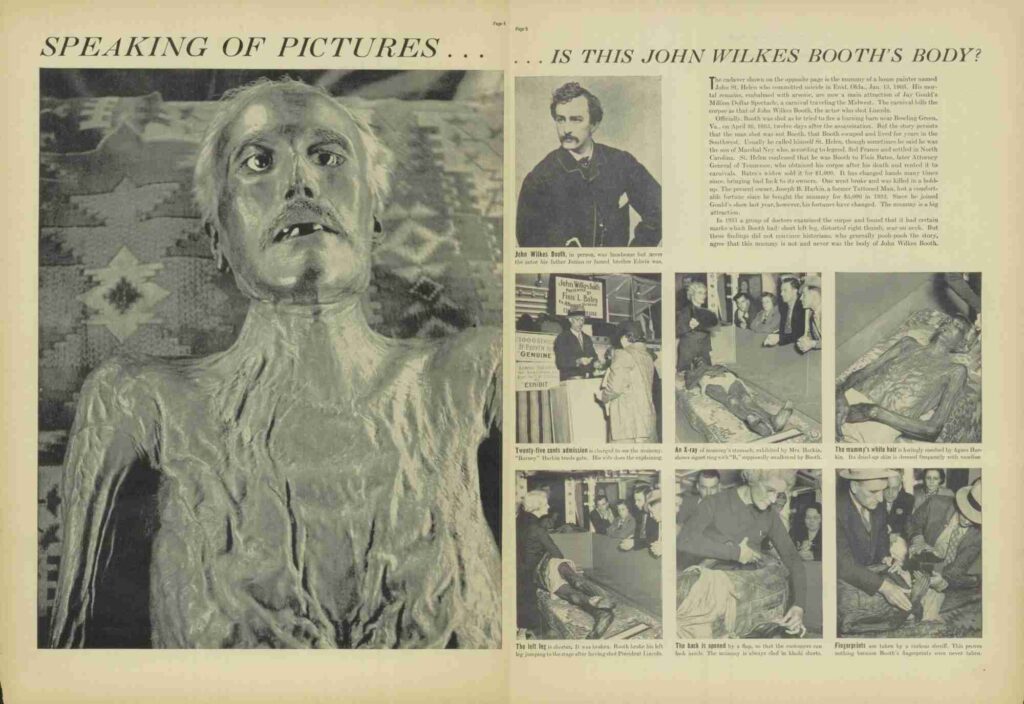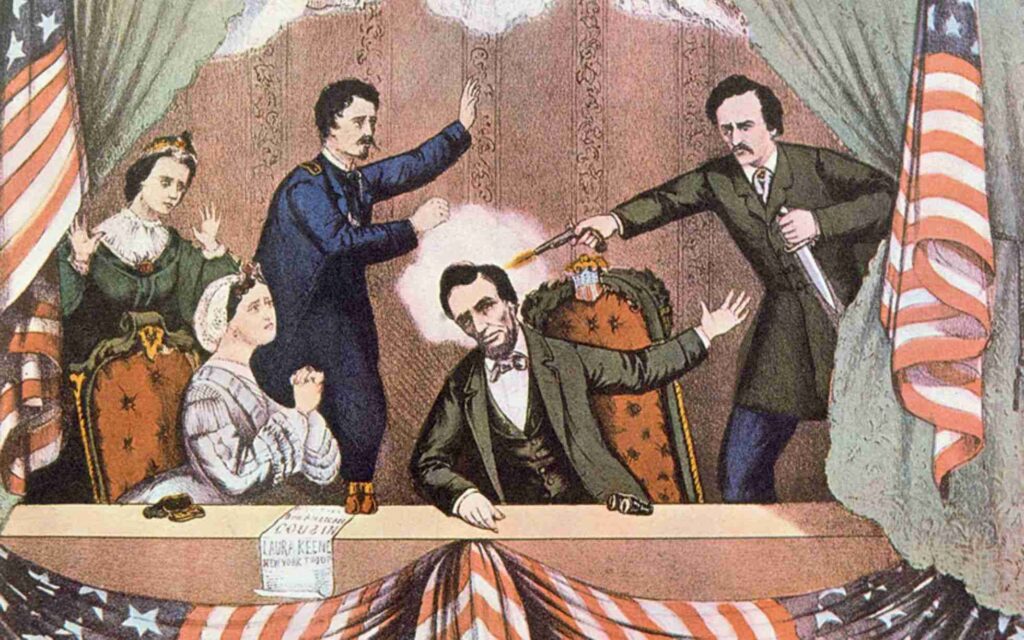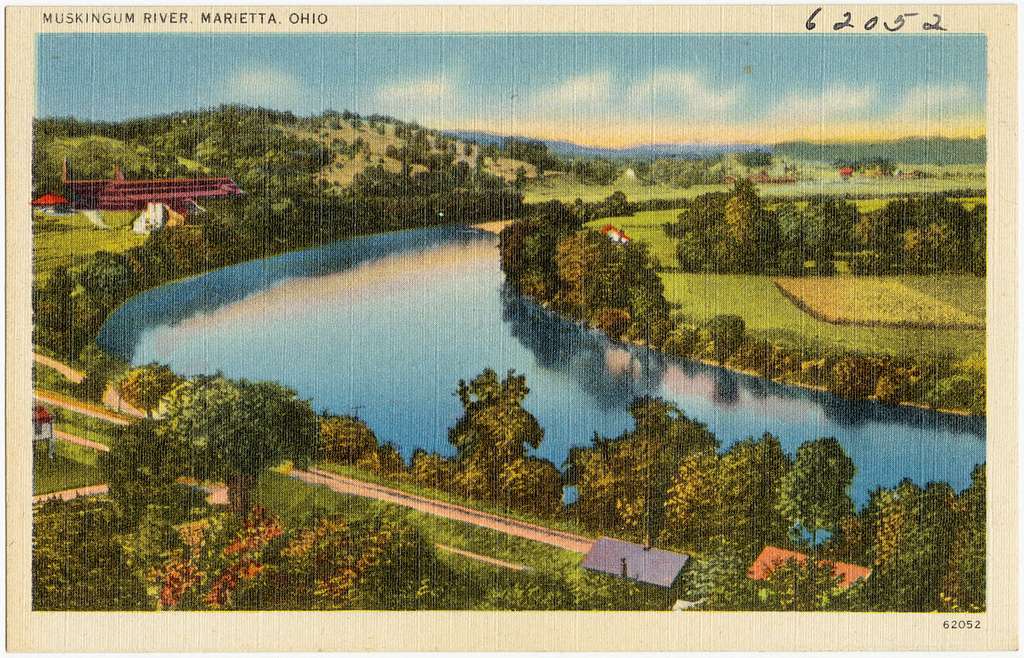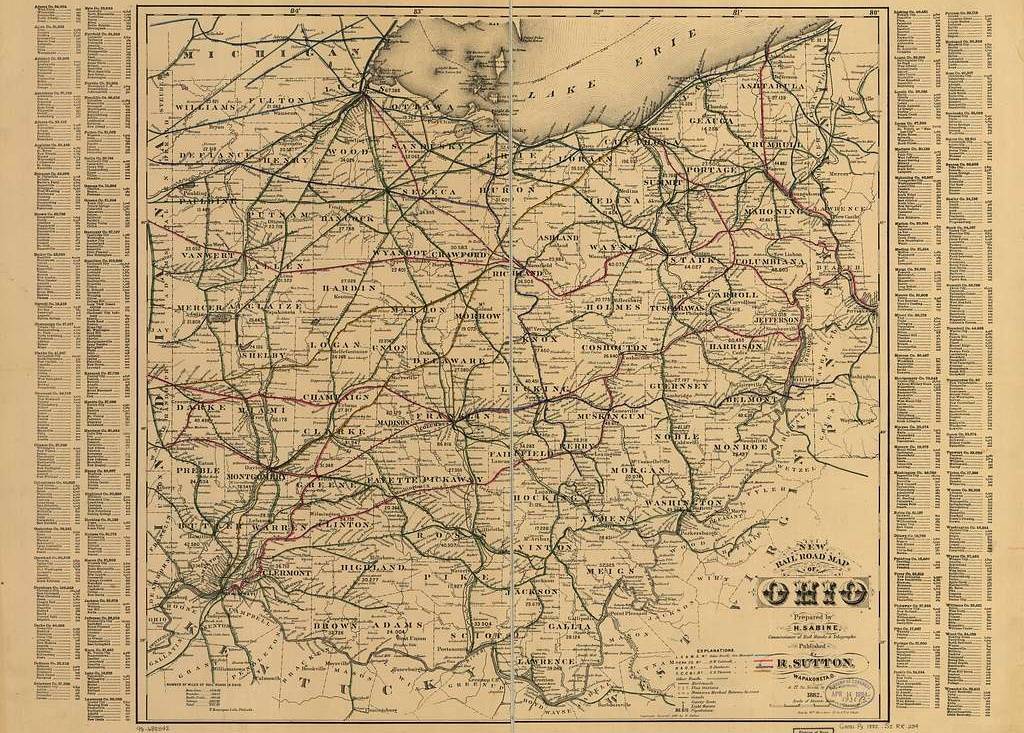 When we think about unsolved mysteries, especially ones connected to Ohio, the last thing we’re going to think about is the assanation of President Abraham Lincoln by John Wilkes Booth. On April 14, 1865, while attending a theatrical production of Our American Friend, Booth entered Lincoln’s box, shot him, then leapt to the stage for the entire audience to see. Soon, there was a massive manhunt trying to track Booth down and bring him to justice. That search ended twelve days later when soldiers caught up to him at the Garrett Farm in Bowling Green, Virginia. The man Booth was with quickly surrendered to the authorities, but Booth wasn’t so willing. He eventually came out after the barn was set on fire, a few shots were fired, and before anything else could happen, Both’s lifeless body was laying on the cold, Virginia soil. Later on, his family would bury his body in Baltimore’s Green Mount Cemetery and there’s a headstone and everything.
When we think about unsolved mysteries, especially ones connected to Ohio, the last thing we’re going to think about is the assanation of President Abraham Lincoln by John Wilkes Booth. On April 14, 1865, while attending a theatrical production of Our American Friend, Booth entered Lincoln’s box, shot him, then leapt to the stage for the entire audience to see. Soon, there was a massive manhunt trying to track Booth down and bring him to justice. That search ended twelve days later when soldiers caught up to him at the Garrett Farm in Bowling Green, Virginia. The man Booth was with quickly surrendered to the authorities, but Booth wasn’t so willing. He eventually came out after the barn was set on fire, a few shots were fired, and before anything else could happen, Both’s lifeless body was laying on the cold, Virginia soil. Later on, his family would bury his body in Baltimore’s Green Mount Cemetery and there’s a headstone and everything.
No mystery there, right? Well, not so fast.
Every major event in history is going to attract mysteries and this case is no exception. Why wasn’t Lincoln’s Vice-President shot like the conspirators had planned? Was Lincoln’s bodyguard a part of this plot? How did Booth remain hidden for as long as he did?
And, why, in 1977, did an optometrist in Barberton, Ohio claim he had John Wilkes Booth’s corpse in his living room? Now that’s a mystery that could prove to be interesting.
However, before we take a look at how Booth can be buried in Baltimore and sitting in some guy’s living room at the exact same time, we have a little historical examination to do.
The Booth Problem
The conspiracy to end the life of Abraham Lincoln was a complex affair, and it went hand-in-hand with a number of other conspiracies, mostly by people trying to undo all the little things Lincoln was responsible for (like, I don’t know, ending slavery and all that). Therefore, due to the fact that a lot of people were working covertly from the shadows, a bunch of mysteries are bound to pop up. For example, there are some who believe that Lincoln’s bodyguard was in on the assassination plot. Instead of watching the president, he went across the street to have a few pints of whatever … and that happened to be the same bar Booth and his co-conspirators happened to be meeting in. Was that a coincidence? Maybe, maybe not. It’s kind of hard to tell.
Over time, numerous conspiracy theories have popped up which suggest that things didn’t exactly go down as History recorded it. For example, there was one conspiracy theory in particular that suggested that maybe it wasn’t Booth who was killed at Garrett’s Farm because he either wasn’t there, or he somehow managed to escape before the place was set on fire, and the guy who died just kind of looked like Booth. At first, people didn’t want to give theories like this any credence, but that would all change in 1907.
That year, lawyer (and now, suddenly author) Finis Langdon Bates, wrote a book he called The Escape and Suicide of John Wilkes Booth. Just as a side note here, perhaps you’ve heard of his granddaughter, Kathy, who you might have seen in television shows like American Horror Story, The Big Bang Theory, or Harry’s Law, or from movies such as Fried Green Tomatoes or Misery, for which she won the Academy Award for Best Actress. But, unfortunately, so far she has nothing to do with this story herself.
St. Helen
In the book, Bates details how he met a man named John St. Helen in Texas. The man was a bit on the dramatic side – in that he could recite Shakespeare from memory, and over the next several years, Bates and St. Helen became the best of friends. But then St. Helen got sick and he called his friend over for a deathbed confession. He said:
I am dying. My name is John Wilkes Booth, and I am the assassin of President Lincoln. Get the picture of myself from under the pillow. I leave it with you for my future identification. Notify my brother Edwin Booth, of New York City.
But, St. Helen didn’t die that day, or the next, or the week after that and he started to get much better. And, Bates wanted more information.
St. Helen would eventually explain a few things. He claimed that the whole assassination plot was orchestrated by Vice-President Andrew Johnson. He further explained that the man killed at Garret’s Farm was a man named Ruddy, who Booth had sent to retrieve some important papers (and who had a passing resemblance toward Booth). Booth managed to escape the barn, but since Roddy had his papers, they presumed he was Booth and identified him as such.
At some time shortly after hearing this, Bates moved to Tennassee, St. Helen moved to Colorado and the two men never saw each other again. Bates wrote that he didn’t believe St. Helen’s story immediately after hearing it, but after a later event or two, he kind of did?
David George
On January 13, 1903, a man named David E George died by suicide. When Methodist Episcopal minister Rev. Enoch Covert Harper came to view the body, he told what passed for a mortician in those days, William Ryan, a pretty wild story. He said the guy, who was in some kind of medicated stupor, had confessed to his soon-to-be wife that his name wasn’t George, but really John Wilkes Booth.
The body belonging to George, or John or whoever it really was (I’m pretty sure it wasn’t Ringo or Paul) was never buried, mainly because they were trying to find a family member or someone to officially take possession of the body. This is how the body came to reside for about eight years at William Broadwell Penniman’s furniture store and funeral home. (Historical note: at this point in history, funeral homes as we know them today weren’t yet a thing – instead, people went to their nearest cabinetmaker or furniture store to purchase a casket to bury their loved ones in, so honestly this whole furniture store – funeral home thing wasn’t all that uncommon. What was uncommon was how Penniman tied the corpse to a chair and posed it in a way that made it look like it was reading a newspaper. But, it seemed to do his business fairly well since everyone and their uncles had to come in and check it out.)
George or John or Whoever did leave some papers behind, but of course there were problems. First off, the property he mentioned in his will didn’t even exist. Secondly, several of the people named in the will either didn’t exist or were, for some reason, playing really hard to find. However, there was one paper that ultimately proved useful – it suggested that a man named Finis Bates (Kathy’s grandfather) be notified upon his death. Bates did venture to Enid, Oklahoma to view the body, which he identified as John St. Helen. By this time, I’m sure Penniman was running out of things to do with some unclaimed corpse-mummy, so the ownership of the thing was then transferred to Bates.
Bates wasn’t sure what to do with it, either, frankly. Which is how the mummy went on something of a circus tour, even attending the 1904 World’s Fair in St. Louis. (This would give new meaning to the title “Meet Me In St. Louis” but I’m sure Judy Garland was singing about someone else.)
(Historical note here, it’s at this time, when he is in possession of the corpse, that Bates wrote his book, the full title of which was The Escape and Suicide of John Wilkes Booth The First True Account of Lincoln’s Assassination, Containing a Complete Confession by Booth Many Years After the Crime, Giving in Full Detail the Plans, Plot and Intrigue of the Conspirators, and the Treachery of Andrew Johnson, then Vice-President of the United States Written for the Correction of History. So, at least we can say that book titles have gotten a bit better in the past century?)
Between the 1940s and the 1970s ownership (if you can call it that) of the corpse (mummy) transferred hands several times, eventually winding up in John Gould’s optometry office in 1977. Before then, though, it had been involved in a train derailment, a wagon accident, a landlord was using it as collateral for loans she couldn’t repay, and so much (so terribly much) more. Frankly I’m surprised all its parts still stuck together.
Sadly, at some point after this, the corpse mummy did go missing and is now, presumed, lost.
Is There Merit To This Conspiracy Theory?

So, the historical mystery remains… did the remains of John Wilkes Booth really reside, for a short time, in an Ohio doctor’s office in 1977?
We do know that yes, the doctor in question did, in fact, come into possession of a corpse that he did display in his office, as there is ample documentation and newspaper coverage of this. But, we still have to ask – was it really Lincoln’s assassin?
Unfortunately, that’s a very difficult question to answer.
We can use modern DNA technology to (hopefully) solve this issue once and for all. However, there is a problem. For example, if we knew where the corpse-mummy is, we could take tissue samples and compare them to known Booth descendants. But, that would require the body, which is now presumed lost.
Another remote (very remote) possibility is that because we know that at various times, “samples” were taken from the corpse (several people tried to cut hair, fingernails, or even parts of the skin off the body because I guess back then people had nothing better to do) if those were tested, it might be possible to get enough clues to help solve this mystery. However, that’s very much a longshot, and if you’ve ever watched a television program that starts with the letters CSI you’ll know that the whole chain of custody thing might make things even more difficult.
But, wait, I hear you say – what about the body buried in Baltimore that is supposedly Booth? Can’t we test that against Booth descendants? If we can prove that body really was John Wilkes Booth, that would prove that he really did die in that barn and how this corpse-mummy never was him in the first place, right?
That is exactly what several researchers were thinking when various attempts at this were made. In 2010, several members of the Booth family acquired permission to have the remains exhumed from the Green Mount Cemetery and compared to DNA samples taken from one of Booth’s brothers. According to the family, the cemetery administration did not approve the request, however the cemetery officials claimed they never actually requested anything. Another attempt was made to extract DNA from
If it is true that the Booth Family’s attempts to extract the DNA of whomever is buried in the John Wilkes Booth grave is correct, you have to wonder why? Is it because, as some have speculated, that people know that the person buried there isn’t the presidential assassin? If that were the case, then the idea that then Vice-President Johnson was the true mastermind behind the plot, which would certainly rewrite history in a fairly major way. One would think that after a hundred years or so, politically speaking, we’d have moved on. Why would it matter?
Then again, maybe it does. In today’s political climate, would (or, could) that information be used politically and what ramifications would using it be. And would any of it be fair?
So, maybe it’s just best to let sleeping dogs lie?
Maybe, sometimes, leaving a mystery for everyone to ponder over makes the subject of history more interesting to look into?



